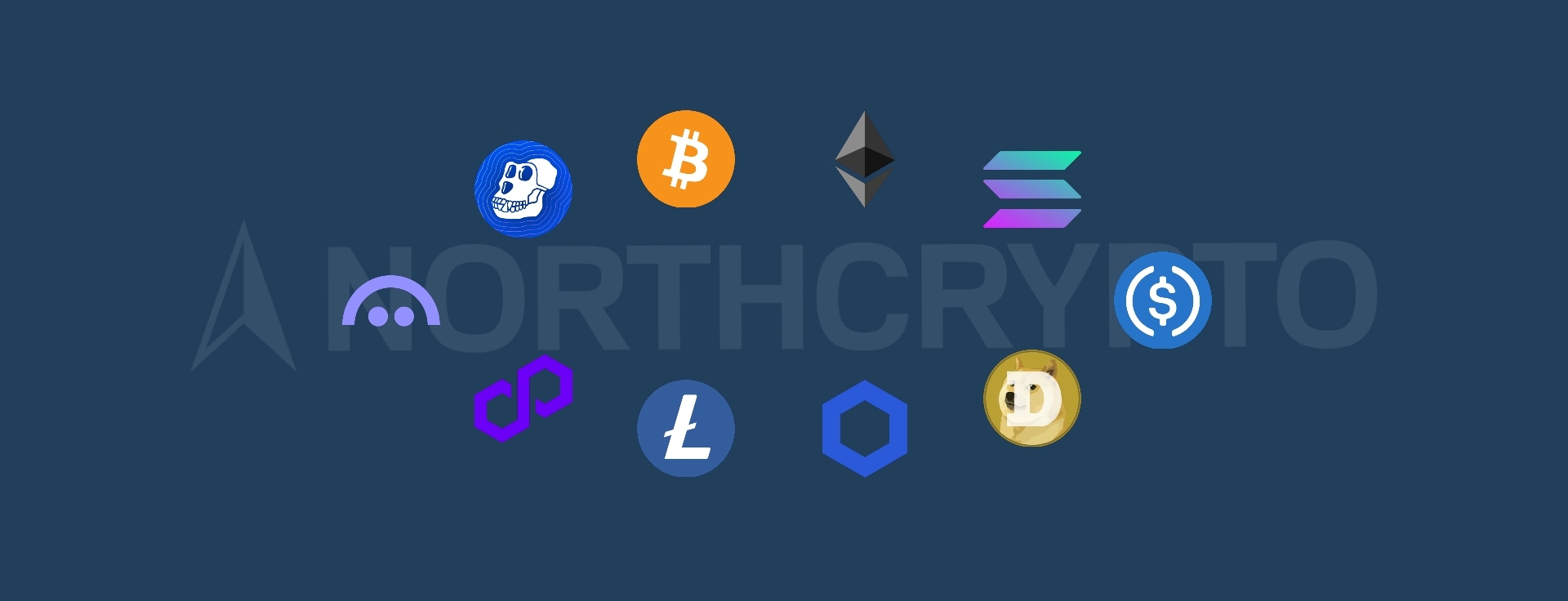How to build your own investment portfolio?
Investing
A carefully diversified and versatile investment portfolio helps reduce investment-related risks. Building your own investment portfolio is a key step in achieving your financial goals, and it requires careful planning and identifying your own risk tolerance. In this text, we go over what points an investor should take into account when preparing his own investment portfolio, as well as how it is possible to use cryptocurrencies in the diversification of his own investment portfolio.
What is an investment portfolio?
An investment portfolio refers to a collection of different investment assets, such as shares, precious metals and cryptocurrencies, that an individual owns. An investment portfolio built as versatile as possible, in which assets are spread over several different investment targets, helps to reduce the risks brought by investment activities.
Historically speaking, investing can be considered an excellent way to increase wealth in the longer term. However, starting to invest can often be seen as very challenging. Adding to the challenge for investors is the fact that the inclusion of completely new types of investment targets, such as cryptocurrencies, in one's own investment portfolio has become more common over the past few years.
Building one's own investment portfolio is a decisive step in achieving financial goals and it requires the investor to carefully consider and identify their own personal goals and risk tolerance. Next, let's go through the key points that investors should consider when building their own personal investment portfolio.
Personal risk tolerance and building an investment portfolio
Risk tolerance refers to the investor's ability and willingness to withstand losses. The first step towards assessing your own risk tolerance is determining your own financial goals. The most common long-term investment goal is typically saving for retirement. Short-term goals can be, for example, saving for a trip abroad or getting a car.
Own investment goals play a key role in the investor's risk management and risk tolerance. The longer an investor's investment horizon is, the greater financial risks he can take. This is because long-term profits can offset short-term price fluctuations. If the investor's investment horizon is very short, for example the goal is to make a larger purchase in a couple of years, the reduction of capital as a result of short-term price fluctuations may have a decisive effect on the success of this goal.
One of the most important things to consider when building an investment portfolio is identifying your own financial obligations. Identifying one's own financial obligations helps the investor determine how much he can invest without losing, for example, his ability to pay bills and other necessary expenses. Typically, people with stable regular income and wealth in savings are able to take greater risks in their own investment activities.
Another key point that comes up when building an investment portfolio is understanding different asset classes. For example, if a person has a good basic understanding of cryptocurrencies and their volatility, he can keep them in his own investment portfolio without the strong price movements of cryptocurrencies causing his finger to immediately move to the sell button. The best way to get used to the volatility of the cryptocurrency market is definitely to start investing with smaller amounts and possibly increase the amount invested little by little.
What to consider when preparing your own investment portfolio
When preparing your own investment portfolio, it is good to take into account at least the following factors:
- Define clear investment goals for yourself. Do you want short-term income or long-term capital growth? The role of goals plays a central role when defining a personal investment strategy.
- Evaluate your own risk tolerance. How much are you willing to lose on your investments? Risk tolerance affects how much capital an investor is willing to invest and what kind of investments he invests in.
- Don't put all your eggs in one basket. This well-worn saying is definitely something that everyone who prepares their own investment portfolios should take into account in their own activities. You should diversify your investment portfolio as versatile as possible into different asset classes, such as shares, bond funds, raw materials and cryptocurrencies. Allocation between different asset classes is one of the most important factors affecting the return of an investment portfolio.
- Define the time span of your own investment portfolio. In long-term investing, we are talking about investing even over several decades, while short-term investing can even last for less than a year. The time span of investments is one of the most important factors in what kind of investment targets an investor should select for his own portfolio.
- When an investor has bought the investment targets that best suit his own preferences, he should also remember to monitor their development. In order to be successful, the investor must also be able to make the necessary changes to his own investment portfolio as the market and the general economic situation change.
Cryptocurrencies in the investment portfolio
In recent years, cryptocurrencies have found their way into the investment portfolio of more and more investors. Adding cryptocurrencies such as Bitcoin and Ethereum alongside traditional investment targets offers investors the opportunity to diversify their own investment portfolio. Cryptocurrencies are characterized by higher volatility than other traditional investment targets. It is important for the investor to know what kind of investment he is investing in. From an investor's point of view, it is also good to understand the nature of cryptocurrencies, diversify the portfolio correctly, and take into account your own goals and risk tolerance.
Next, we will go over a few key points that an investor should consider when diversifying their investment portfolio into cryptocurrencies:
Before you consider investing in cryptocurrencies, make sure you understand their key operating principles. Cryptocurrencies such as Bitcoin and Ethereum are by nature different from traditional investment targets and their volatility can be very strong even in the short term.
Define clear goals for yourself, what you want to achieve by diversifying into cryptocurrencies. Are you ready to invest in cryptocurrencies in the long term or do you expect quick returns from your investment?
Remember to diversify within the cryptocurrency market as well. Therefore, do not invest all the funds you have allocated to cryptocurrency investments in the same cryptocurrency.
Always make sure you keep your cryptocurrencies safe. Use trusted cryptocurrency wallets or alternatively let a trusted operator like Northcrypto store your cryptocurrencies. Scams have always been extremely common in the cryptocurrency market, so because of this, it is worth paying special attention to security when investing in cryptocurrencies.
Today, more and more people have included cryptocurrencies as part of their investment portfolio. Cryptocurrencies such as Bitcoin and Ethereum offer investors the opportunity to diversify their portfolio in addition to traditional investment targets. In cryptocurrencies, investors are especially interested in their profit potential and technical solutions. If adding cryptocurrencies to your investment portfolio seems timely, you can easily acquire them from Northcrypto's trading service.
Summary
Successfully building your own investment portfolio requires the investor to carefully diversify between different asset classes, such as shares, funds and cryptocurrencies. When building an investment portfolio, the investor should define clear goals and a time horizon, and take into account personal risk tolerance. Diversification plays a key role in risk management, and it also contributes to achieving the desired returns in the long term. Monitoring and regular reassessment of the portfolio also play a key role in ensuring that the investments remain in line with the investment goals.
Mikko Soon Head of Private Banking Last updated: 13.10.2023 12:00


